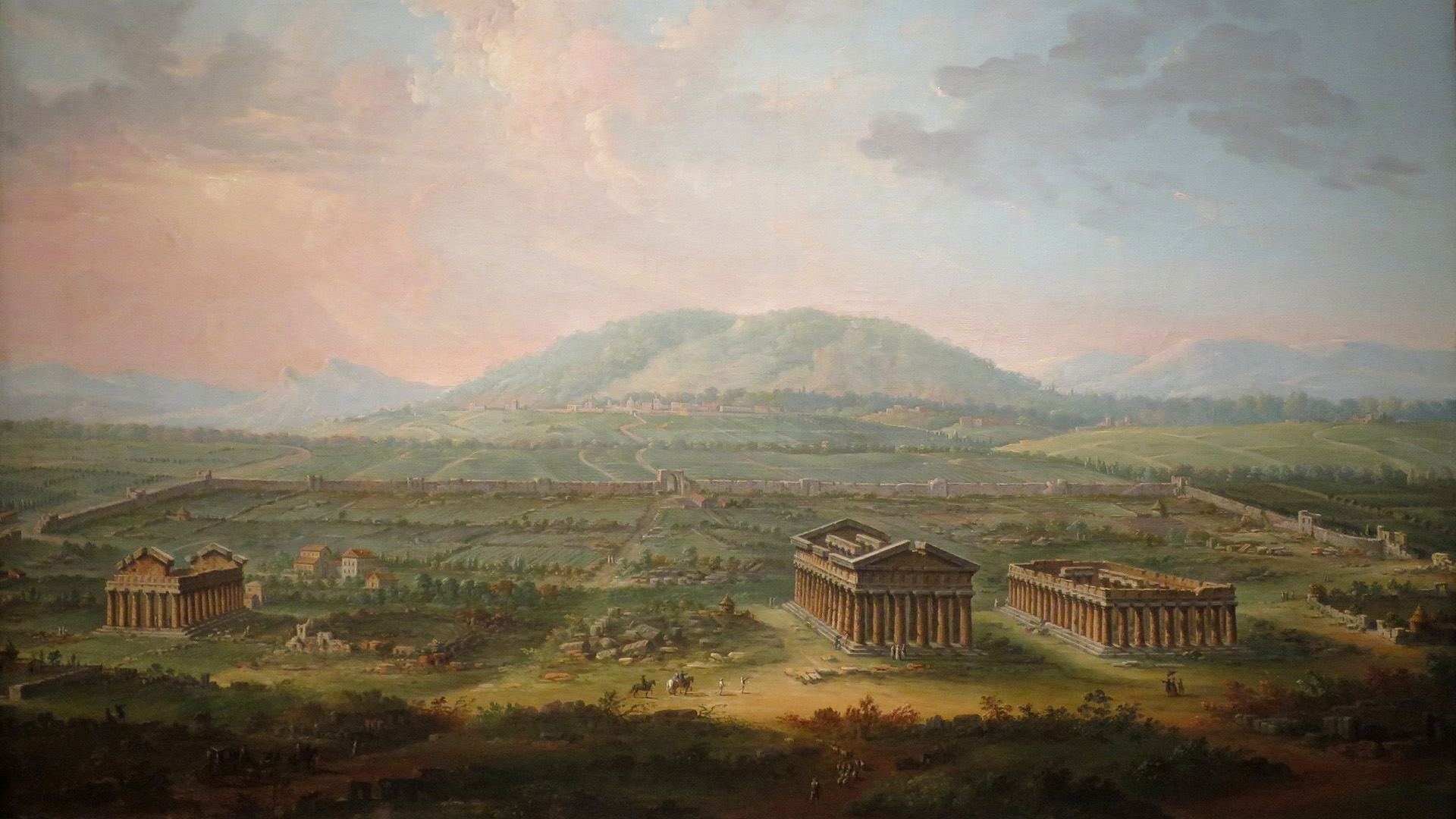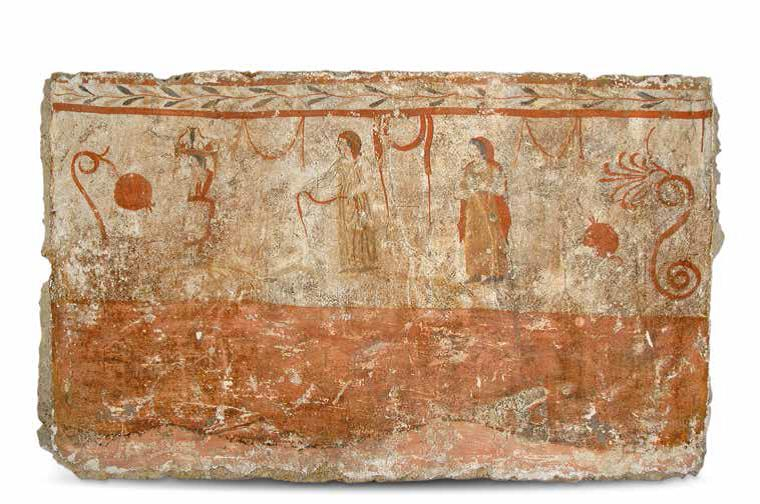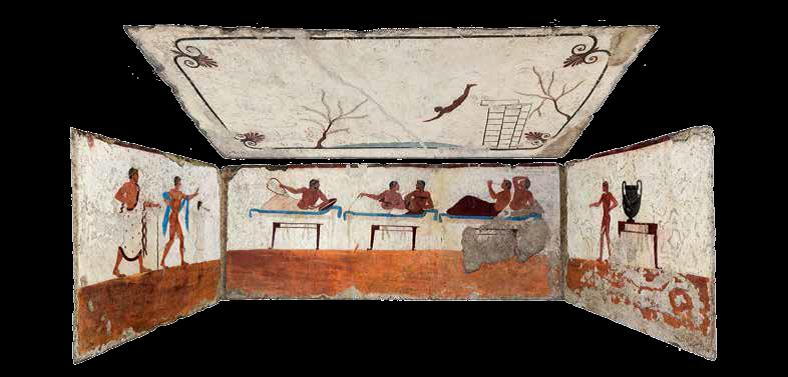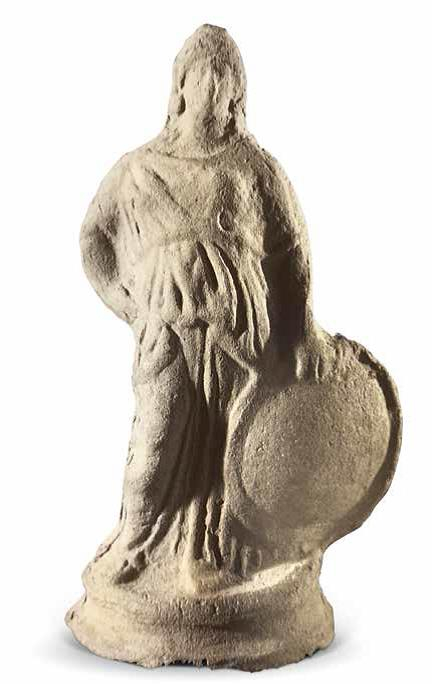
Art
21:34, 09-May-2019
Exhibition of multicultural exchanges of Italy in ancient Greece
Updated
08:46, 10-May-2019
By Li Qiong
04:17

Paestum, in Campania, Italy, is what you might say a classic Mediterranean city. It is listed on the UNESCO World Heritage List for its magnificent Greek temple sites and splendid colored frescos.
Currently, many of the city's relics are being shown at the China Millennium Monument in Beijing. The exhibition explores the collision of cultures between ancient Italy and Greece.
These 134 artifacts came from excavations in Paestum, located in the southeast of Naples, Italy. They present the historical changes and cultural integration of this ancient city, as well as times of war and peace in "Great Greece," an area that once was a Greek area of the Italian Peninsula.

Fresco "Funeral Procession." /Photo courtesy of the China World Art Museum
Fresco "Funeral Procession." /Photo courtesy of the China World Art Museum
"The biggest highlights are the colored frescos on the walls of the tombs,” said Jiang Haimei, curator from the Chinese side. “People in Paestum have a tradition of narrating their life on the tombs after death, like what Chinese people may have used to do. The themes cover their daily life, wars and religious stories. Mostly, four colors are found in the frescos: red, yellow, black and white."
A selection of 11 frescos presents ancient funeral customs around Paestum. Through these paintings, we can roughly trace people's lives in the region more than 2,300 years ago -- how they looked, the cattle they used, and war scenes.
The Tomb of the Diver is an important exhibit. The original one is a national treasure of Italy and is only exhibited domestically. Here in Beijing, visitors could have an immersive experience in the simulated tomb through multimedia technology.

Fresco "The Tomb of the Diver." /Photo courtesy of the China World Art Museum
Fresco "The Tomb of the Diver." /Photo courtesy of the China World Art Museum
People have painted decorations on the four inner walls of the stone cist where the deceased was placed. It portrays the scene of a symposium, a Greek banquet. And above on the covering slab, a naked young man is diving into a pool of water flanked by two trees. This is the diver who gave his name to the tomb. Here comes the most mysterious part. Where is he going? Where does he come from? Is he diving into the better world? No one knows exactly what the dive means.
Paestum, buried in the swamp for over a thousand years, was only discovered in the 18th century and is well preserved. Once a colony of Ancient Greece, this city has three magnificent Dorian temples, which are even more ancient than the Parthenon in Athens.

Fictile figurine of Athena with a rounded shield. /Photo courtesy of the China World Art Museum
Fictile figurine of Athena with a rounded shield. /Photo courtesy of the China World Art Museum
The pottery paintings and sculptures on display bear witness to the prosperity and the development of poetry, philosophy, art and craft of this region.
This is the very first time that the cultural relics of Paestum have left Europe and appeared in Beijing. They'll also go to other Chinese cities by the end of June.

SITEMAP
Copyright © 2018 CGTN. Beijing ICP prepared NO.16065310-3
Copyright © 2018 CGTN. Beijing ICP prepared NO.16065310-3